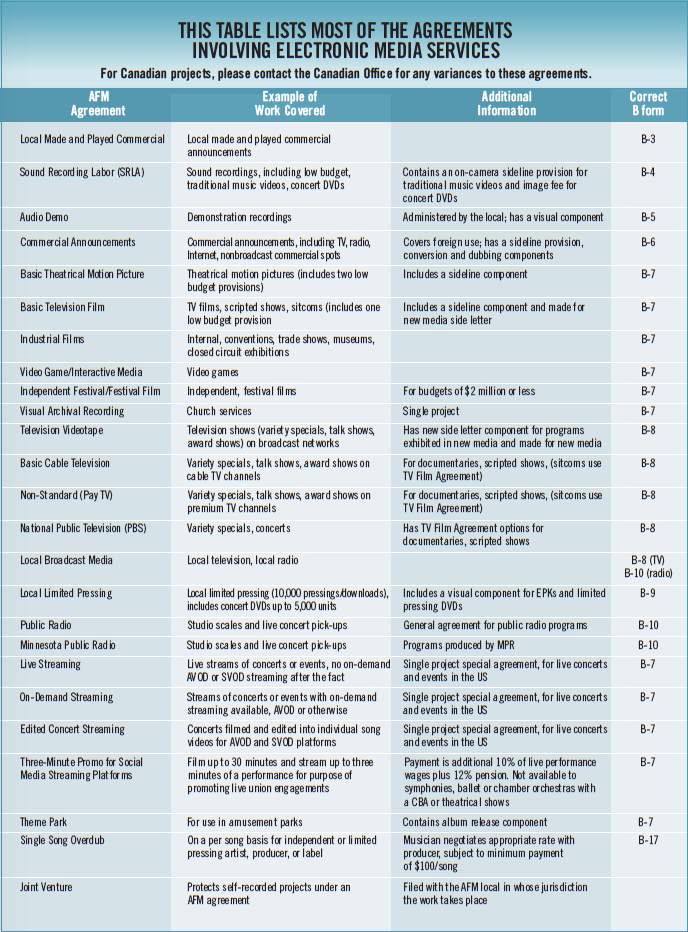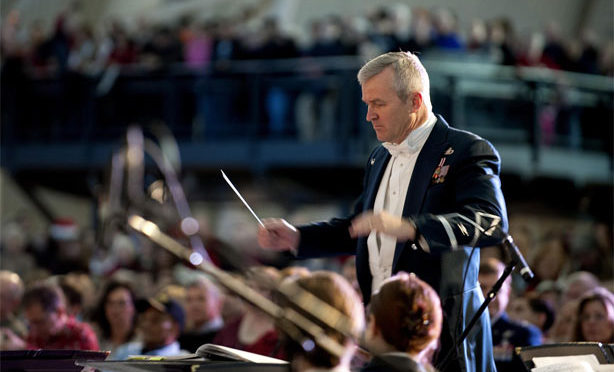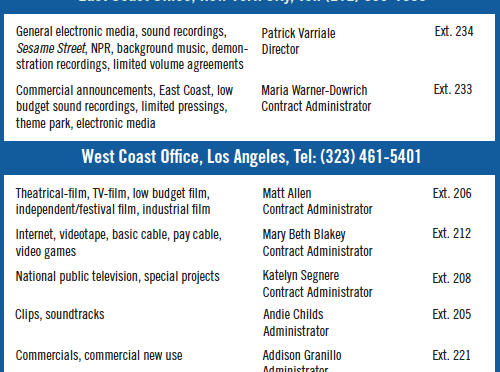The following questions will help determine which rates and agreement should be applied to your recording. Always contact the AFM to confirm which contract you should be using. Note, if an electronic media project involves a symphony, opera, ballet, or chamber orchestra with a collective bargaining agreement, you need to contact the Symphonic Services Division to determine the appropriate agreement.
1) If it is a live performance being recorded or taped, is there a live performance contract on file?
2) What is the nature of the project (music recorded for a CD release/download, commercial announcement, television show, motion picture)?
3) If it is for a CD release/download, what is the approximate number of pressings/downloads? What is the approximate budget?
4) If it is for a commercial announcement, is it for a national, regional, or local campaign? Which medium (television, radio, Internet, etc.) will it be used on? Will the musicians be on camera?
5) If it is for a television show, which type of show is it for (variety special, talk, sports event or theme, documentary, sitcom, awards)? Where will the television show air (network, basic cable, pay cable, PBS, local television)?
6) If it is for a variety type show (talk show, awards show), what is the length of the show and its rehearsals?
7) If it is for a television movie, scripted episodic show, television documentary, or sitcom, will musicians be on camera?
8) If it is a live performance pick-up of a staged concert for the Internet, will it be a one-time live stream or an on-demand stream? Will the stream access be ad supported or subscription based?
9) If it is a project made for new media, what type of show is it, and over which new media platforms will it be available (Netflix, Amazon, Hulu, Apple)? Will the viewing be ad supported or subscription based?
10) What is the name of the production entity and party responsible for control of the product?












